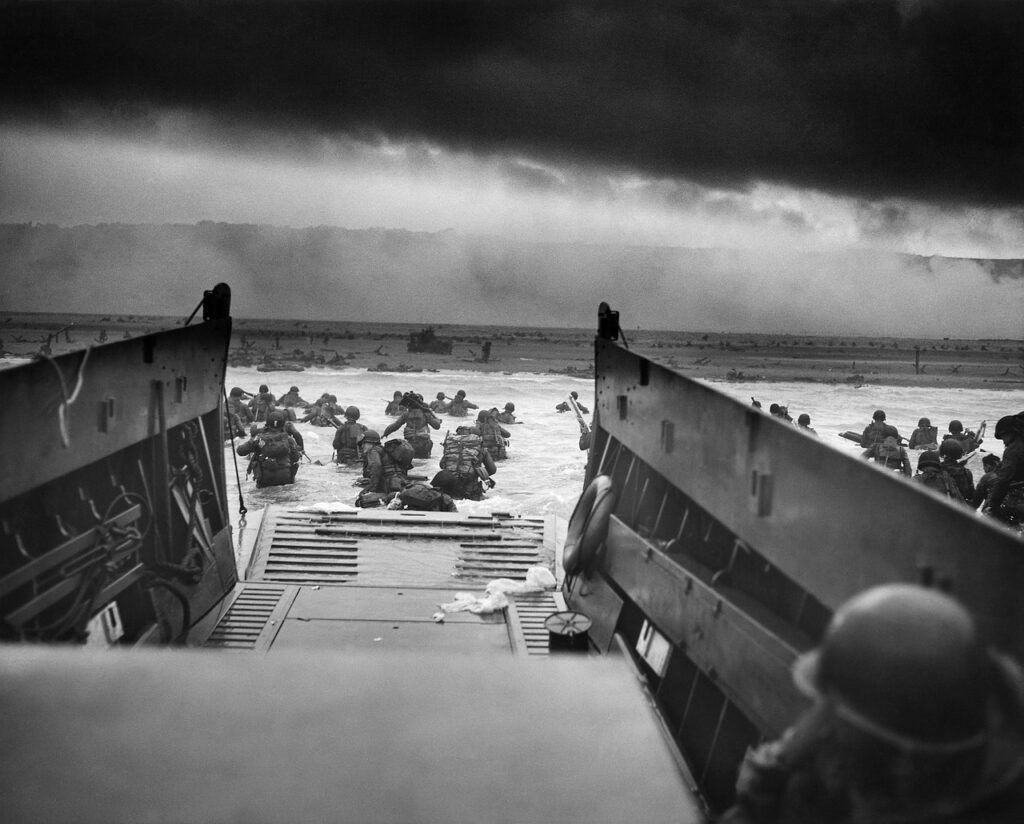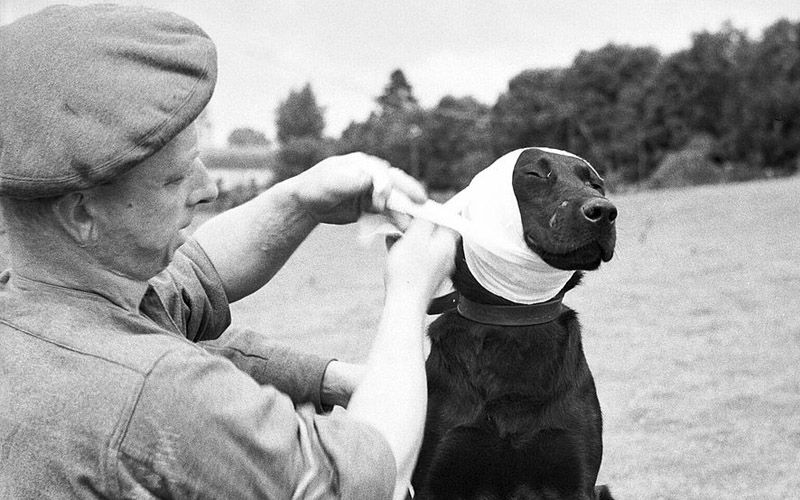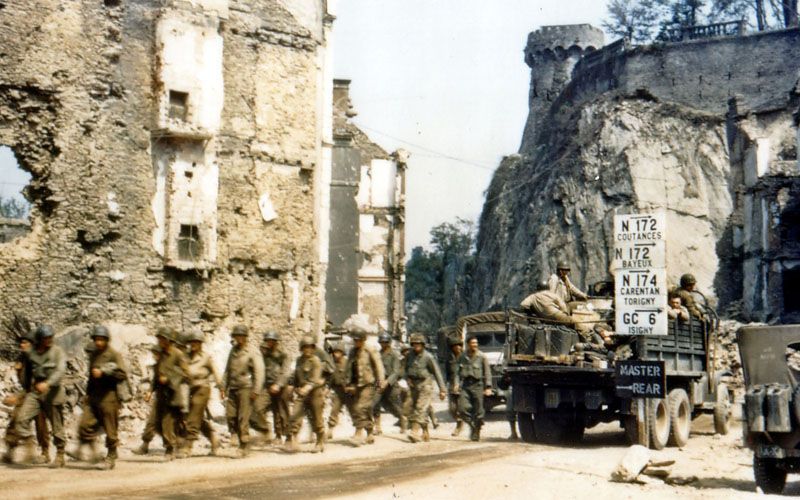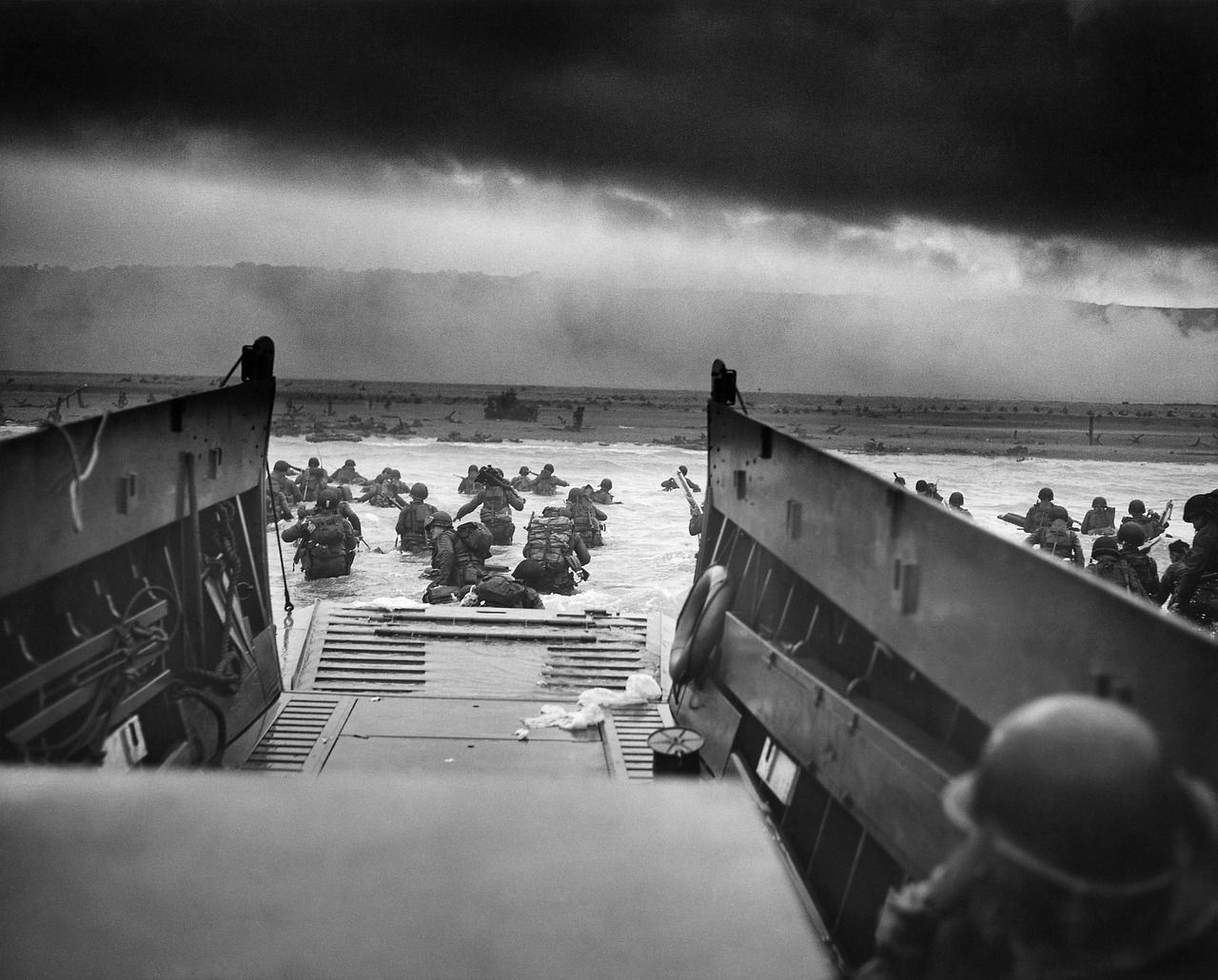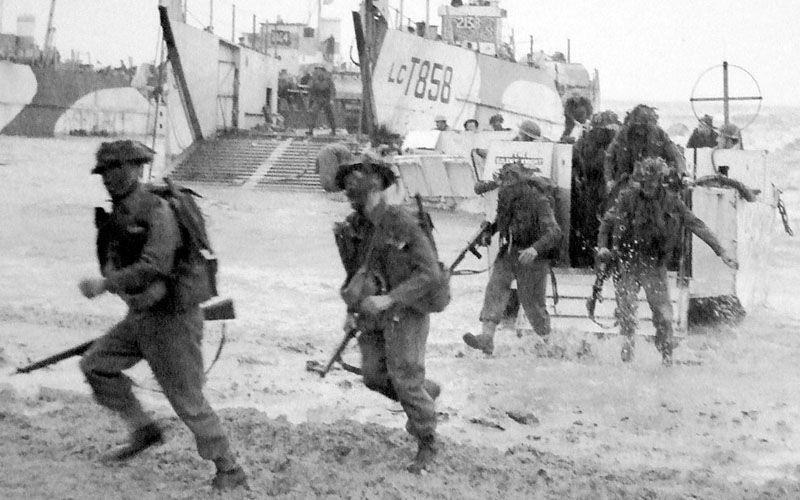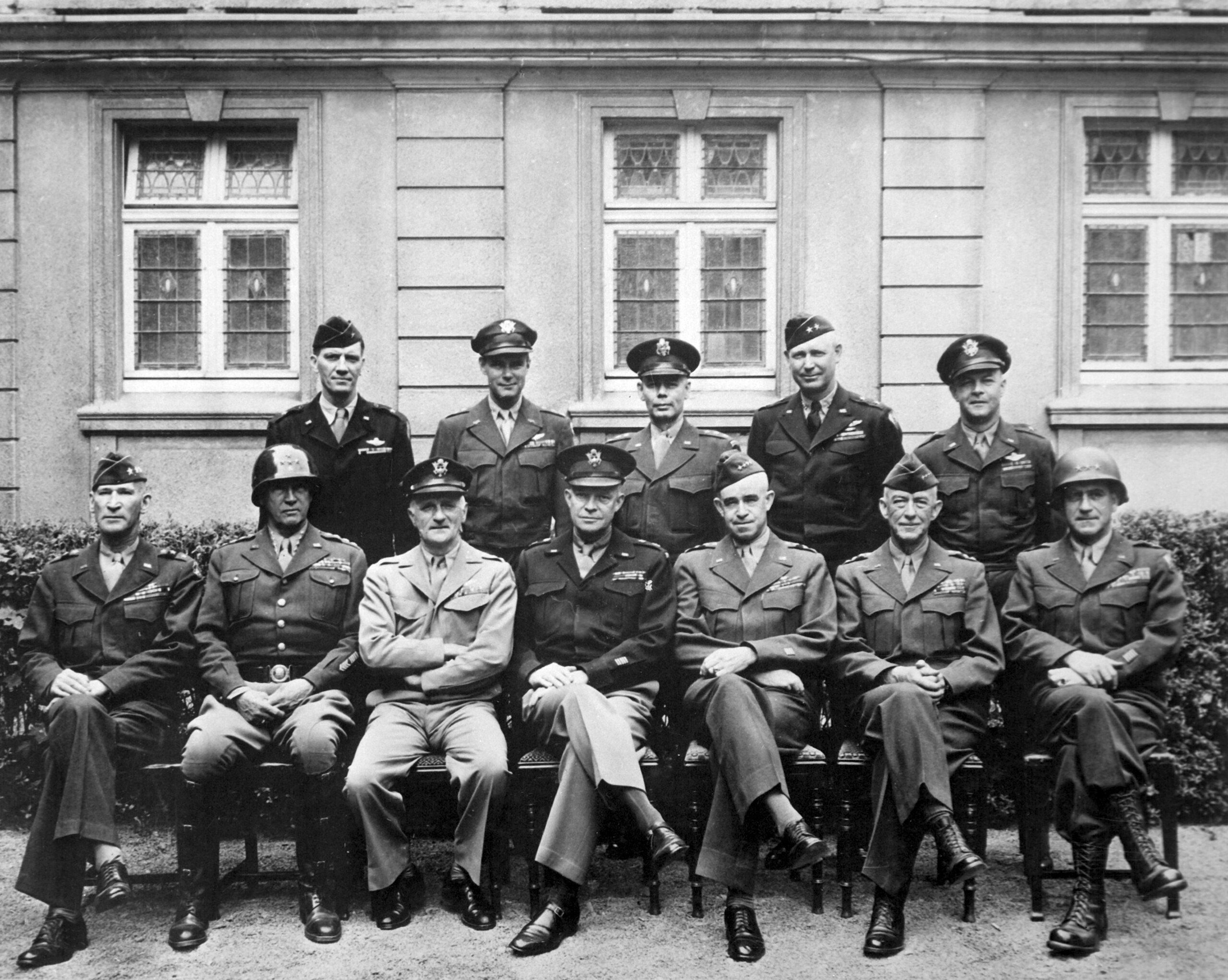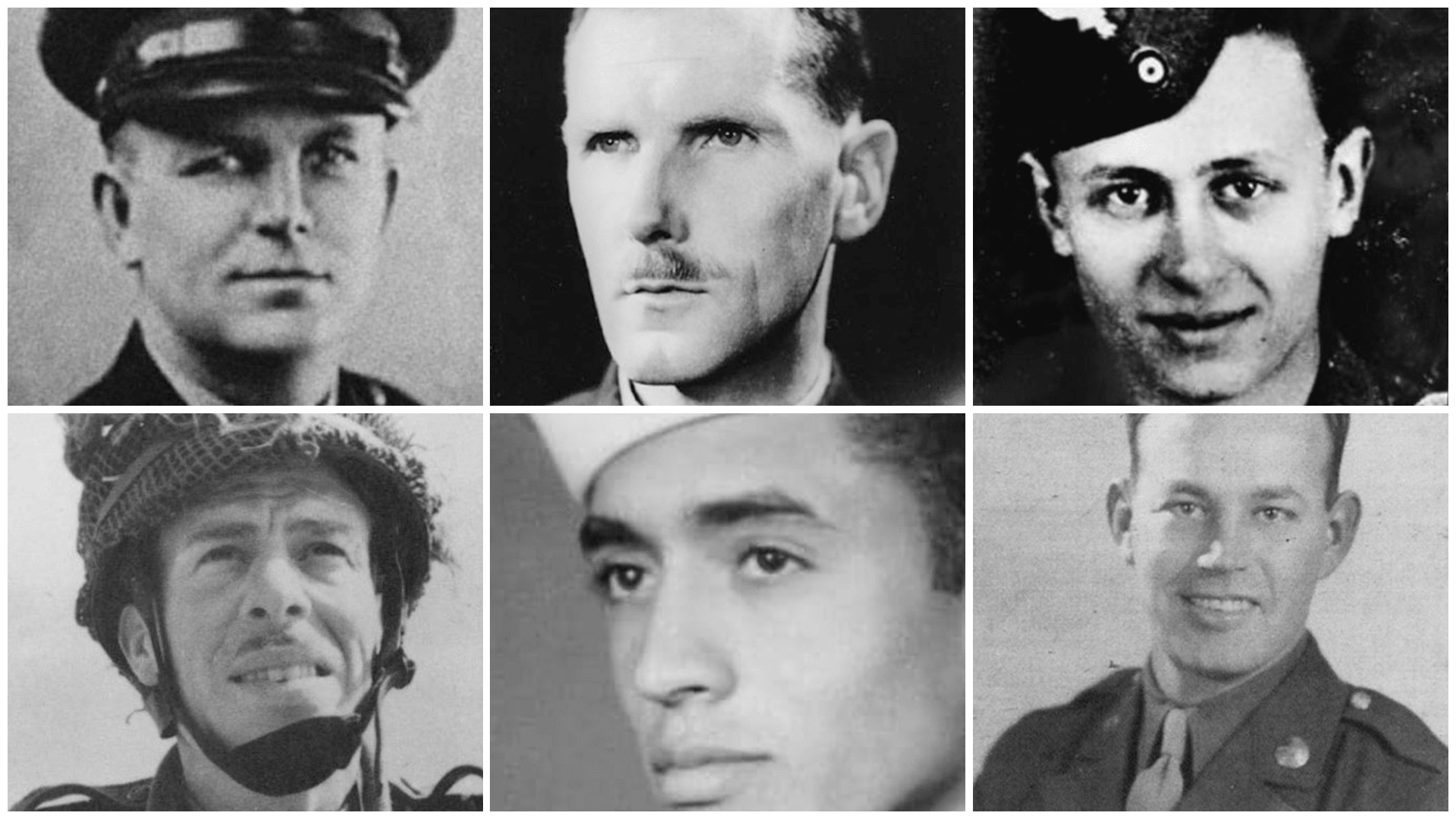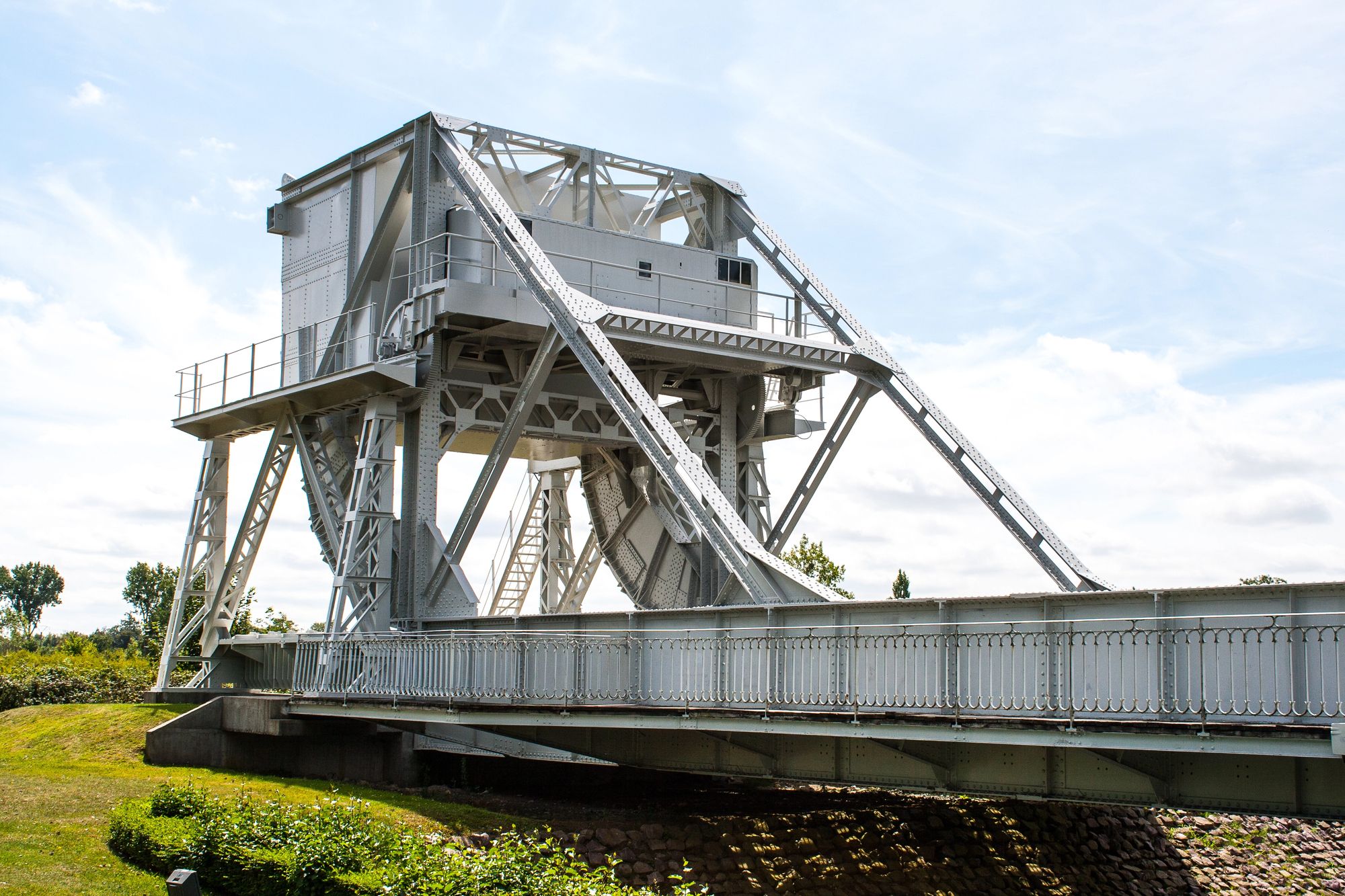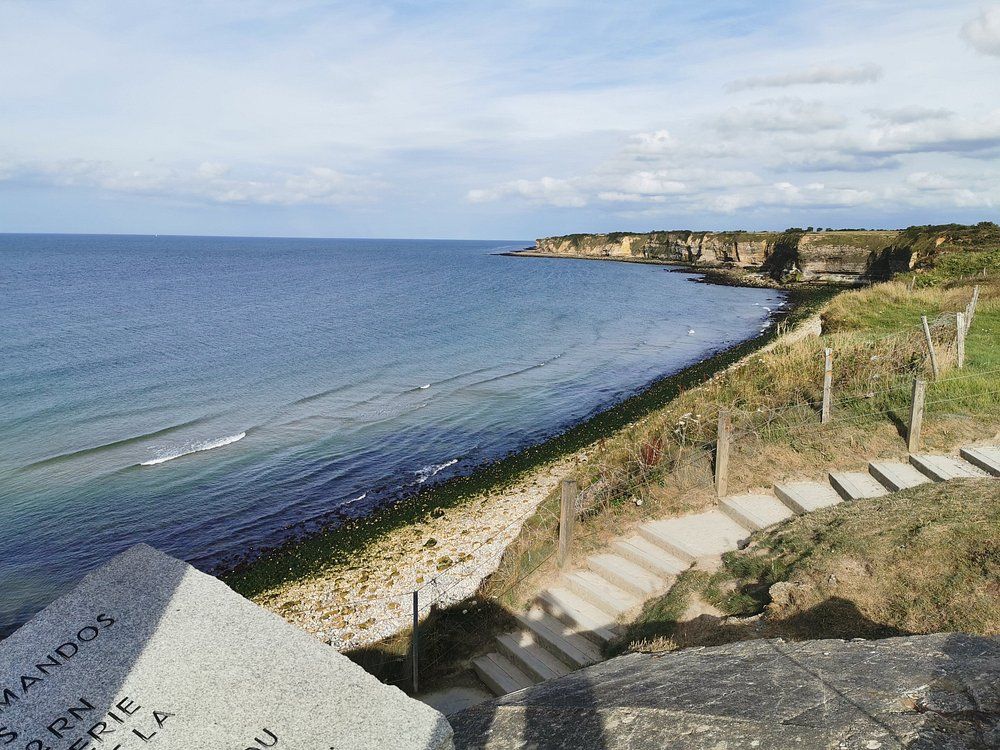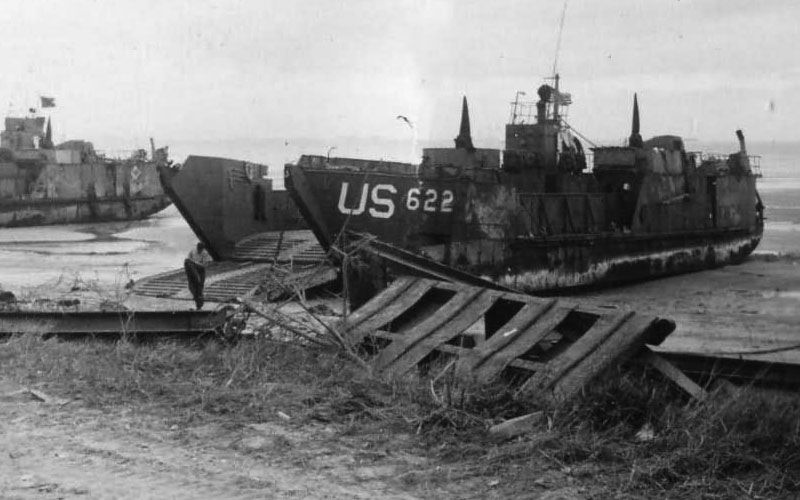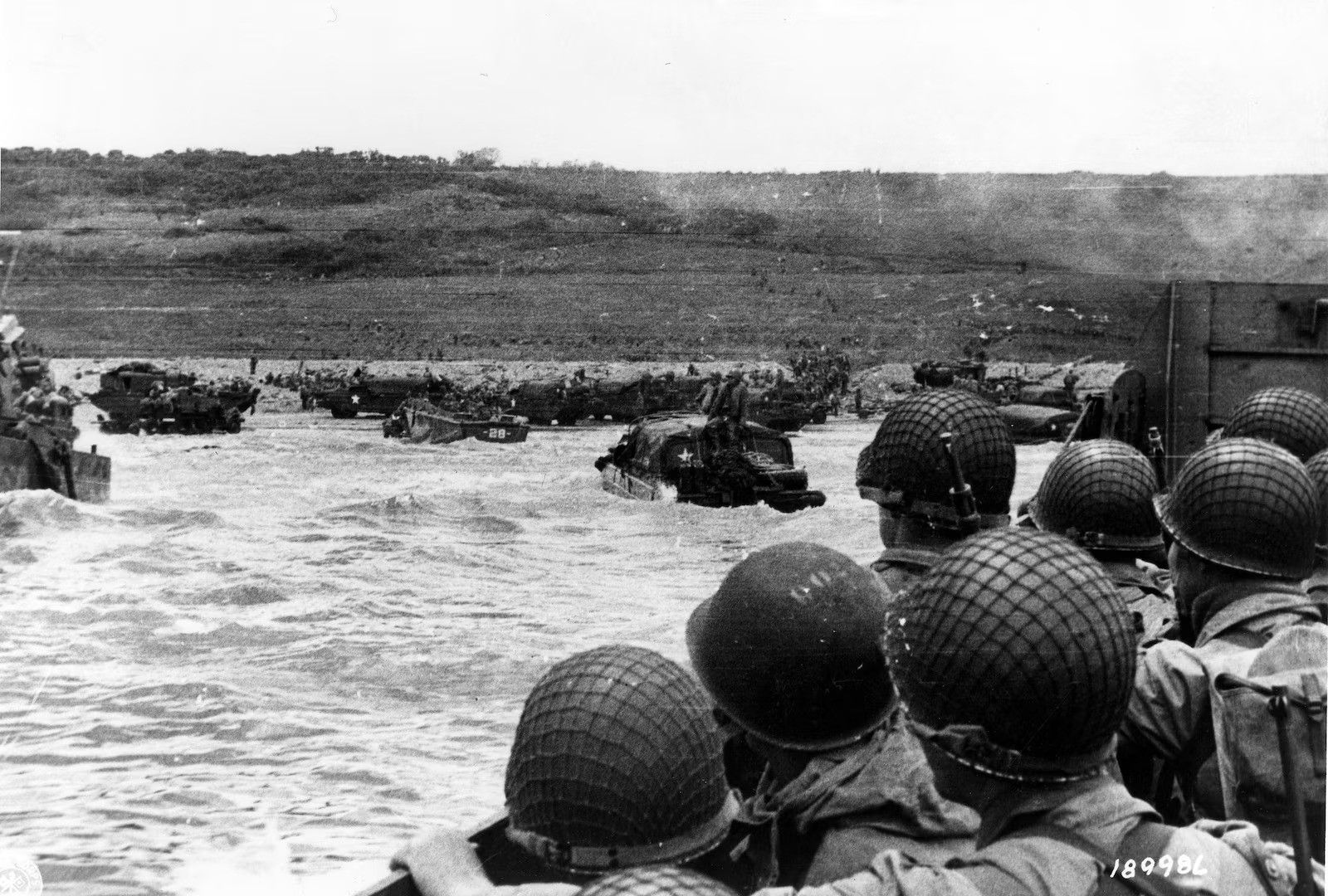D-Day was the largest amphibious assault and the largest combined operation in history. Two years in the planning, over the course of one day enough men and materiel were landed on French soil to secure a lodgment area from which the Allies could begin to push back the Germans occupiers. The numbers behind the Normandy Landings are staggering. Often times they are also contradictory, varying from source to source. When dealing with the statistics of D-Day, Overlord, Neptune and the Battle of Normandy we feel that some caution should be taken and the numbers used as an approximate guide. The figures quoted here at DDay.Center should be regarded in the same manner, although we have tried our best to use only reliable and reputable sources.
Some facts are pretty straightforward of course. We know that around 156,115 men were landed across five invasion beaches and drop zones. The invasion area was 50-miles wide and was split into two zones – the Western Task Force containing the American beaches codenamed UTAH and OMAHA, and the Eastern Task Force with the British and Canadian Beaches codenamed GOLD, JUNO and SWORD. Around 73,000 American soldiers landed on D-Day, and around 83,115 British and Canadian. Facing them were around 50,000 Germans troops.
In the build up to the Normandy Landings, around 7,000,000 tonnes of supplies were shipped to Britain from the United States, including almost 450,000 tons of ammunition. Allied planners also produced around 17,000,000 maps of varying types including training maps with fake place names. As D-Day drew closer, the Supreme Allied Commander General Eisenhower was reportedly smoking up to 4 packs of Camel cigarettes each day.
Sailors from 8 different nations, some 195,700 of them, manned the ships of the naval flotilla which carried the bulk of the troops and equipment across the English Channel. Of the 6,939 vessels that took part in the Normandy Landings there were 1,213 naval combat ships, 4,126 landing ships/landing craft, 736 ancillary craft and 864 merchant vessels. Waiting for the Allies on their arrival in Normandy were some 4,000,000 mines placed by the Germans as part of their “Atlantic Wall” defenses. Amongst the American forces to land at Utah Beach were 14 Commanche Indian ‘code-talkers’ who were used to send coded messages in their native tongue.
The airborne troops at the eastern and western Battle of Normandy, flanks of the invasion coast were delivered by a combination of 2,395 aircraft and 867 gliders. However, only around 15% of paratroopers landed in the right place. Other aircraft took part in massive bombing raids designed to destroy beach defenses and German positions. They dropped around 3,200 tons of bombs on D-Day. Of the approximate 15,000 sorties of Allied aircraft on D-Day 113 planes were lost. None of these, however, fell victim to Luftwaffe aircraft which only managed to fly 319 sorties during 6th June. The German air force was outnumbered 30:1 on D-Day.
Allied losses on D-Day are estimated to be around 4,413 dead. German numbers are not well recorded, but it is estimated that between 4,000 and 9,000 were killed.
Within five days of landing in Normandy, the Allies had landed 326,547 troops, 54,186 vehicles and 104,428 tons of supplies. In the weeks that would follow the two huge pre-fabricated Mulberry Harbours would be constructed. It had taken 55,000 workers more than 6 months to construct the components, using 210,000 tons of steel and 1,000,000 tons of concrete. The harbor in the American sector – “Mulberry A” – was all but destroyed by a huge storm on 19th June, but the surviving “Mulberry B” port at Arromanches would operate for 10 months despite only be envisaged to operate for three. The Mulberries cost £40,000,000 to construct and transport across the Channel, but “Mulberry B” (also known as Port Winston) would see the unloading of approximately 2,500,000 men, 500,000 vehicles and 4,000,000 tons of supplies.
The Battle of Normandy was fierce and bloody and would last until late August when the Allies crossed the Seine River towards Paris. Casualty rates were slightly higher than they were during a typical day during the Battle of the Somme in 1916. Over 425,000 Allied and German troops were wounded, killed or listed as missing during the Battle of Normandy. Of these, around 200,000 were Allied casualties of which almost 53,714 were killed. No reliable figures exist for the German losses, but it is estimated that around 200,000 were killed or wounded with approximately 200,000 more taken prisoner. French civilian casualties during the Battle of Normandy stand at around 19,890 – not including the estimated 15,000 that had been killed during bombardments prior to D-Day. The Battle left 120,000 Norman buildings destroyed and a further 270,000 damaged.

